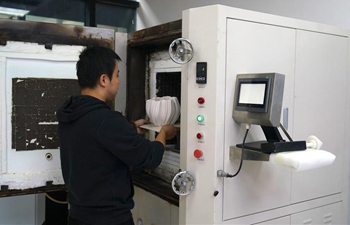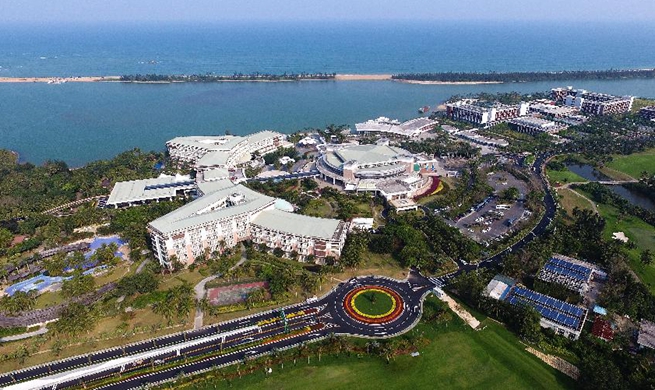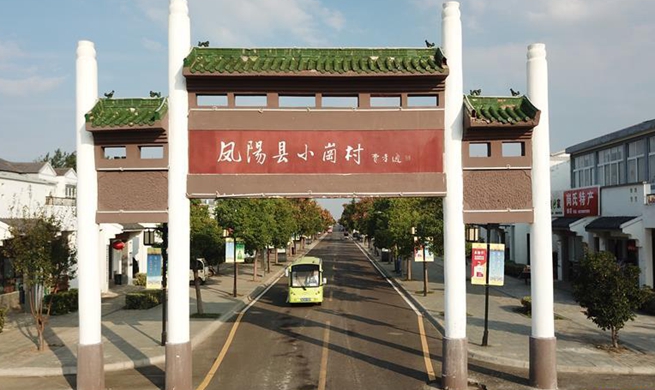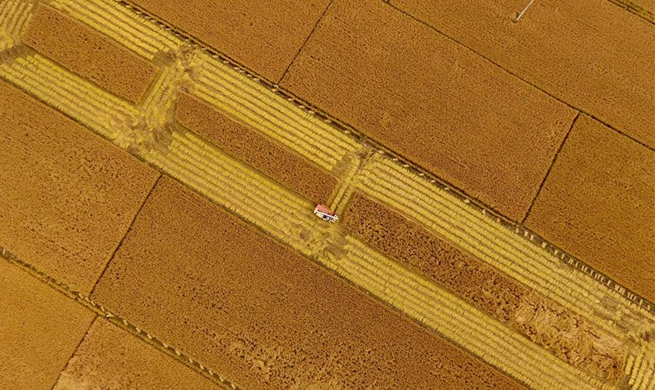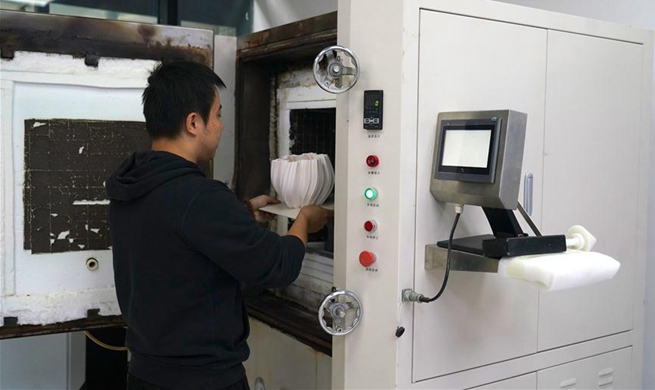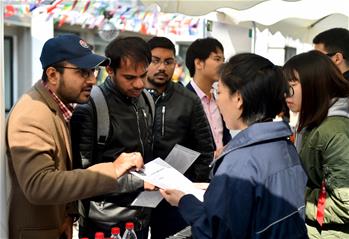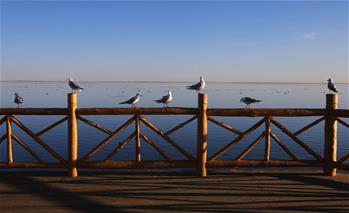ZAGREB, Oct. 16 (Xinhua) -- A well-timed regional initiative in central and eastern Europe, the Three Seas Initiative (TSI), has been given the green light from the European Union (EU) while benefiting from a convenient boost by the region's cooperation with China.
WELL-TIMED LAUNCH
Emerging challenges from political changes and economic uncertainties worldwide are prompting countries to coordinate responses and innovate thinking. The TSI represents a resounding "no" to rising unilateralism and protectionism from countries in the region in seeking national development.
The regional initiative was launched in 2016 in Dubrovnik, a port city in southeastern Croatia. It groups 12 EU members located between the Adriatic Sea, the Baltic Sea and the Black Sea. Last September, it obtained support from the EU to function as a cooperation platform.
Addressing the third TSI summit held in Bucharest, Romania, European Commission (EC) President Jean-Claude Juncker said, "Europe needs to breathe with two lungs, one from the East and the other from the West, and if this does not happen, Europe will remain breathless and I feel that our Union is starting to run out of breath."
"So we must put more emphasis than ever before on cooperation, to use a common language for the East and the West," the EC head said.
"Your presence shows us that our goals were understood and that the enormous potential of this Initiative has been widely recognized," Croatian President Kolinda Grabar-Kitarovic said in response.
Grabar-Kitarovic in 2015 first proposed the initiative and was soon joined by Polish President Andrzej Duda. Starting from being an informal political forum, the TSI is now confirmed as a platform for cooperation in energy, infrastructure, and trade.
In its short history, the initiative's inception was snubbed by Brussels, which reportedly deemed it harmful to European unity, and U.S. President Donald Trump addressed the second summit held in Poland last year.
"The Three Seas Initiative wishes to contribute to the economic development of central Europe in order to erase the differences between the so-called European East and West, between the so-called old and new Europe, which specifically means better living standards for our citizens," Grabar-Kitarovic told the TSI summit in Bucharest.
Andjelko Milardovic, a Zagreb-based professor at the Institute for European and Globalization Studies, believes the regional initiative has bright prospects.
"It has developed recently into something much bigger. Brussels and Germany now support it, there are signals from Russia that they don't have anything against the initiative, so I assume it will only continue to spread because it has an important economic dimension," Milardovic said.
WIN-WIN SITUATION
Naturally, the regional initiative is benefitting from the westward outflows of Chinese investment and business opportunities that come with the Belt and Road Initiative (BRI).
China proposed the open, inclusive global initiative in 2013 with a focus on building infrastructure and trade networks along the ancient Silk Road trade routes in order to seek common development and prosperity.
For example, among the 11 projects Croatia proposed and put under the TSI framework at the TSI summit in Bucharest are some that overlap with the Belt and Road projects.
"The Three Seas and Belt and Road initiatives coincide and Croatia would very much like to see that China is actively participating in the realization of the goals when it comes to the Three Seas Initiative discussed at the summit in Bucharest," Dario Mihelin, Croatia's presidential foreign policy advisor, told Xinhua.
He said Croatia, a participant in the Belt and Road, hopes China would continue funding such projects.
"President Xi Jinping and President Kolinda Grabar-Kitarovic have confirmed the desire to strengthen cooperation through the Belt and Road Initiative three years ago during the visit of the Croatian president to China," he said. "The Croatian side expects China to continue with the investments mentioned as the goals of these two initiatives in this part of Europe."
Both initiatives will facilitate the development efforts in the Balkan state, said Miro Kovac, head of the Croatian parliamentary committee on foreign policy.
"Croatia as a EU member state is very much interested in taking an active part in both initiatives because of their potential to further Croatia's economic development," he said, citing the Peljesac bridge as "an important project within the framework of the Belt and Road Initiative."
A Chinese enterprise in early 2018 won the bid for the first-stage construction of the bridge, which he said "will connect more efficiently two parts of Croatian and thus EU territory."
COOPERATION POTENTIAL
"It is certain that the new impetus for further cooperation through these two compatible initiatives will be the '16+1' summit that will be held in Croatia next year," Croatia's presidential advisor Mihelin said.
The "16+1" mechanism serves as a platform for enhancing cooperation between China and the 16 Central and Eastern European (CEE) countries.
Noting that almost all TSI members are parties in the "16+1" cooperation mechanism, Romania's former Prime Minister Victor Ponta called for synergy between the TSI and BRI in order for the CEE countries to benefit more.
The consolidation of regional cooperation between CEE countries and the possibility to design and implement infrastructure, energy and transport projects, as was promised by the TSI, may also allow for taking advantage of the BRI, Ponta added.
As far as Romania is concerned, Ponta said, "We have a huge opportunity thanks to our strategic position on world's map ... all of them, the Belt and Road Initiative, '16+1' mechanism and the Three Seas Initiative, are intersecting in Romania. We just need to know how to take advantage of it, because the potential is there and it's great."
Radu Dudau, director of the Romanian think tank Energy Policy Group, also sees the need to align the TSI with the BRI. "There is no incompatibility between the two initiatives, but the synergy between them is in the potential stage, as projects can be developed," he told Xinhua.





